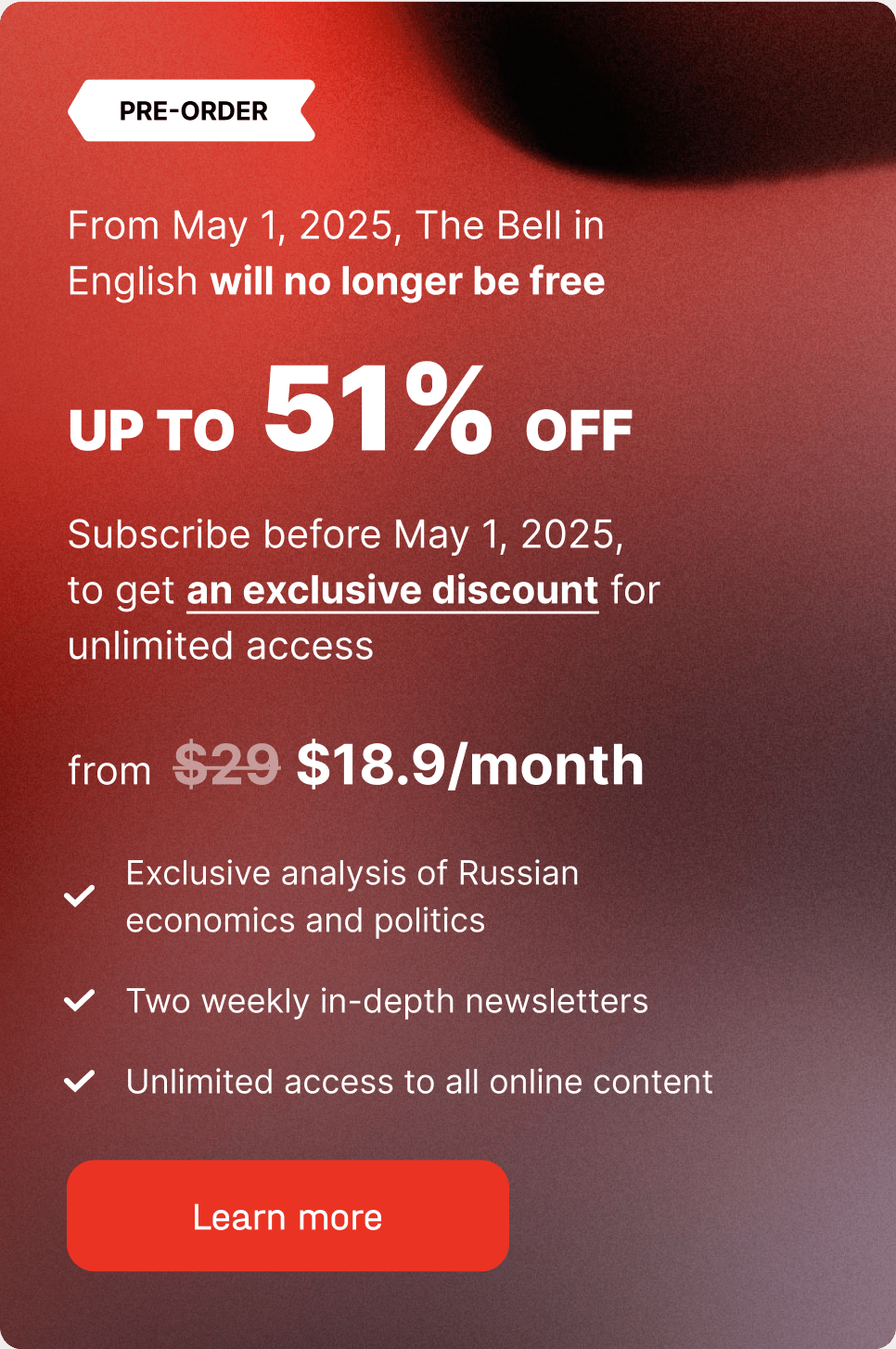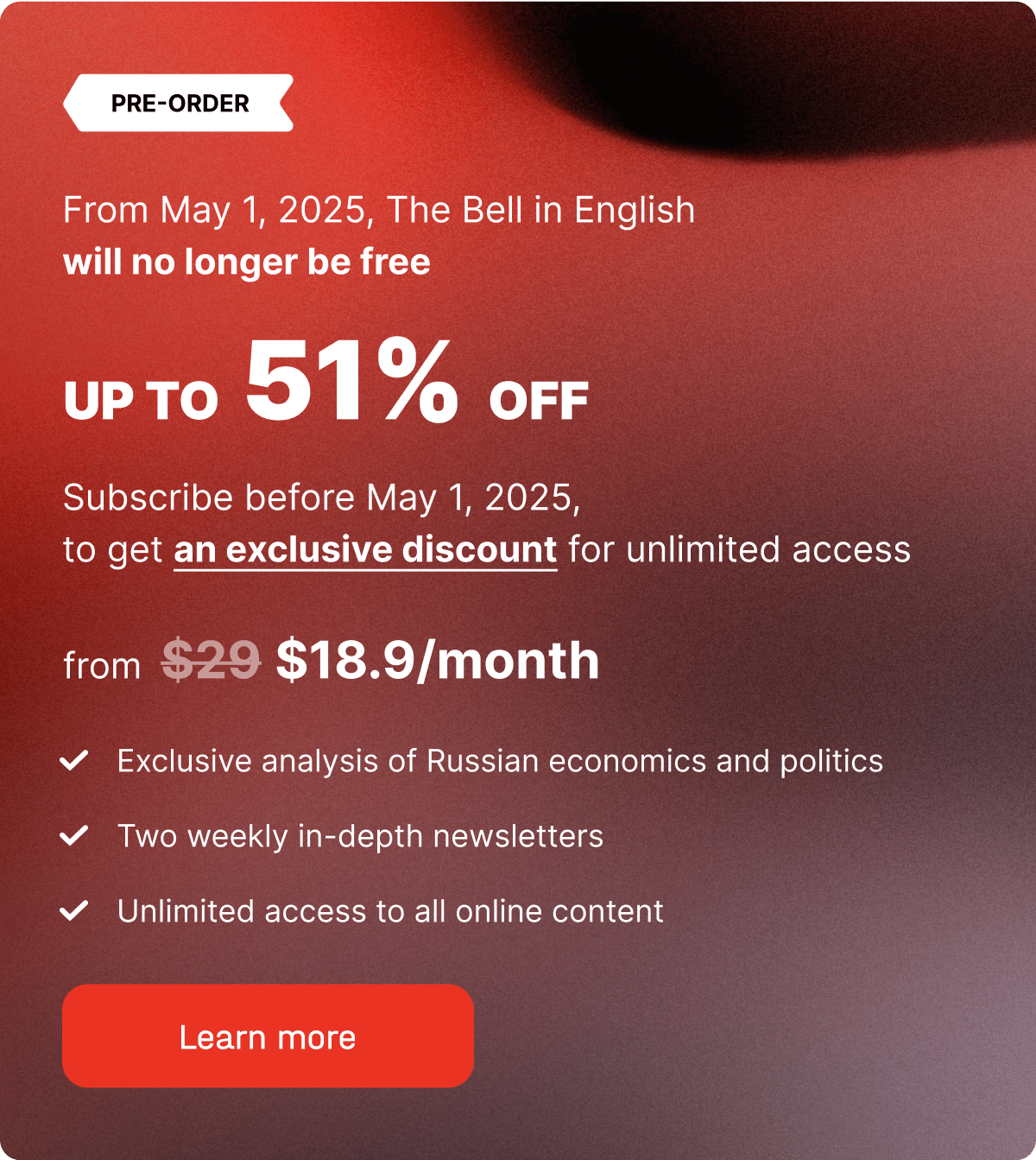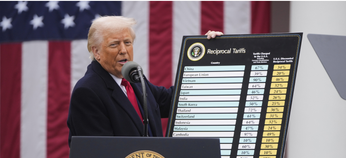
Central Bank tips economy towards recession to stem inflation
The central bank has reacted aggressively to surging inflation, the falling ruble and the imminent increase in government spending. It hiked the base rate on Friday by two full percentage points, from 13% to 15%, and signalled there was little likelihood of rates coming back down again before spring or summer 2024. This step might enable the bank to curb inflation, but threatens an even greater militarization of the economy and will put further pressure on non-military industries.
- On Oct. 27, the Bank of Russia’s board decided to raise its key rate by two percentage points, from 13% to 15%. The regulator acted more aggressively than expected, with the consensus among analysts on the eve of the decision predicting an increase to 14%.
- There was never any doubt that the rate would rise to some degree. Since the bank last raised rates, Russia saw a record rate of inflation in September of 14.6% on a seasonally-adjusted rate, as well as the publication of the government’s huge spending plans in its 2024 budget that plots a 20% increase in state outlets next year. The increase is driven by record levels of military expenditure, which will account for more than 6% of Russia’s GDP.
- An extended period of double-digit interest rates should slow inflation and strengthen the ruble. However, the side effect could be a return to recession. After the latest decision, Bloomberg Economics put Russia’s chances of slipping into a recession next year at 70%.
- The central bank’s policy has had curbing inflation as its main goal for some time. Now, tightening monetary policy also chimes with the political aims of the Russian authorities. The consequences of an economic downturn will be long-term, but the Kremlin needs a quick win on inflation because of the presidential election scheduled for March 2024.
- Taking into account the central bank’s tighter policy, economist Anton Tabakh detailed one potentially negative scenario for Russia’s economy next year. If things don’t go to plan, inflation may remain high — fuelled by sanctions, high import costs, a weak ruble, budget expenditure and staff shortages. And at the same time, high interest rates will trigger a recession in parts of the Russian economy not seen as priorities for government spending — that is, outside of the military sector and infrastructure investment.
- On average, that situation means overall headline numbers on growth, for instance, might look acceptable. But the economy is more and more resembling the old Soviet joke about averages. (The head doctor of a hospital asks a nurse to report on the average temperature of the patients. “36.6 degrees,” the nurse says. To which, the doctor replies: “How many times do I have to tell you? We don’t count those in the morgue.”)
- In economic terms, the strong performance of Russia’s military sectors may simply end up concealing full-scale stagflation in the civilian parts of the economy — no growth and rapidly rising prices — Tabakh warned.
Why the world should care
Put simply, Russia’s economic policy is as follows: The government is accelerating the economy and pushing inflation higher by pumping money into industries related to the war and by increasing social spending. The Central Bank is trying to slow down inflation by raising interest rates and sacrificing economic growth. The defense sector will continue to grow due to government orders, meaning the looming recession will hit hardest in civilian parts of the Russian economy. This vicious circle leaves Russia facing a difficult decision in the event of regime change — moving away from expenditure on the military-industrial complex (and, by implication, Russia’s aggressive foreign policy) will automatically lead to a deep economic and social crisis at home.



PAID SUBSCRIPTION LAUNCH
From May 1, 2025, The Bell in English will no longer be free
From May 1, 2025, all The Bell’s newsletters and online content will be behind a paywall. We have taken this decision so that The Bell can remain financially independent, and maintain our high standards of journalism and economic expertise






